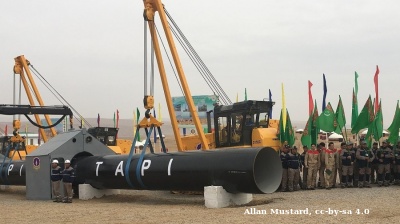Kyrgyzstan is facing a growing energy crisis despite a higher water level at its main reservoir, Toktogul, and massive investment into new hydropower stations (HPPs).
The mountainous country is almost entirely dependent on hydropower. While the current water level of 13bn cubic metres at Toktogul is above last year's level of 11.8bn cubic metres, Energy Minister Taalaibek Ibrayev has warned of a widening electricity shortfall this autumn-winter season.
Kyrgyzstan is projected to produce 3.9bn kilowatt hours (kWh) less electricity than it needs, an increase from the 3.2bn kWh deficit last year.
The surge in electricity demand, partly due to rising temperatures driving increased air conditioner use during the hot summer, has been exacerbated by climate change. The melting of glaciers in Central Asia is accelerating the flow into reservoirs, but the hotter weather is at the same time pushing power consumption higher.
Rising demand has been accelerated by a booming economy. As bne IntelliNews has reported, Central Asia has been a big winner from the Ukraine war, enhancing trade with Russia. Economic growth in Kyrgyzstan expanded to 7% in 2022 and continued into 2023 with 7.8% growth y/y before accelerating again in the first half of this year to 8.7%.
Incomes are rising and the growing demand from Russia for manufactured goods it can no long source from Europe has led to a manufacturing boom in the republic – all of which is also pushing up demand for power. Bishkek's growing urban population, which consumes more electricity than inhabitants of rural areas, further intensifies the problem.
Other countries in the region have been grappling with similar problems in balancing power generation and power demand. Turkmenistan has copious supplies of gas and is almost 100%-dependent on its almost endless supplies of the fuel. Tajikistan is also mountainous and has already partly built the massive Rogun hydropower dam. Kazakhstan has plentiful supplies of oil and gas, but this week voted through a referendum to allow the government to build its first nuclear power plant (NPP). And Uzbekistan, with the poorest energy resources, is the green energy champion of Central Asia, but has also signed off on a gas supply deal with Russia that will end the power crises of recent years, and also plans a small-scale NPP in the future to power its fast-growing economy.
The Kyrgyz Republic is further behind than the other “Stans” in dealing with its energy shortage. As bne IntelliNews reported, the country is investing its economic windfall into building the giant Kambarata-1 HPP plant that will not only supply the whole country, but earn money from exports.
“One year ago, when a state of emergency was declared [in response to power shortages], President Sadyr Japarov set us the task of eliminating this deficit within three years,” Ibrayev said earlier this month. “Whereas small hydroelectric power plants [in the aggregate] previously produced around 200-300mn kWh annually, this figure has now grown to 750mn kWh.”
But work on delivering the hydroelectric dream has only just begun and it ism years away from completion. Until then the republic is trying to muddle through as best it can.
To manage the crisis, Kyrgyzstan has introduced higher electricity tariffs to curb consumption and improve the financial sustainability of its energy sector. This marks a significant shift from past policies, which avoided price hikes due to political sensitivities.
The bloody overthrow of president Kurmanbek Bakiyev in 2010 was widely attributed to public outrage at his plans to hike electricity bills.
In the meantime, Kyrgyzstan is turning to neighbours for help. Turkmenistan, Uzbekistan, Kazakhstan and Russia are all supplying electricity to Kyrgyzstan, with Russia also playing a growing role as an energy guarantor in the region.
Turkmenistan is poised to deliver 1.7bn kWh starting from January 1. Uzbekistan has committed to provide another 500mn kWh, of which around 200-300mn kWh have already been delivered. The final 1.7bn kWh will come from Kazakhstan and Russia.
Russia's increasing dominance is reflected in initiatives such as the reversal of the Central Asia-Centre natural gas pipeline in October 2023 that is now supplying Uzbekistan. It is an important part of changing the energy balance in the region. Currently, Uzbekistan buys around 3bn cubic metres of gas annually from Russia’s Gazprom. But by 2026 or so, imports from Russia to Uzbekistan, through Kazakhstan, are set to increase fourfold, reaching 11 bcm per year.
There are also plans to integrate Central Asia into the Russian power grid as Moscow hunts for new customers now that it has broken ties with Europe.
Last month, the energy ministries of Uzbekistan and Russia agreed to connect Russia's power grid to the Soviet-vintage Unified Energy System of Central Asia, which notionally links all the region’s national electricity grids in a vast ring and is slowly being upgraded.
Even grander plans are in the works. Since Russia’s gas exports to Europe ended in 2023, Russia has been pushing to expand deliveries to China via Power of Siberia 2 (POS2) via Mongolia, but progress has been very slow with the two sides bickering over price. However, a simpler and half-built alternative is to expand the Soviet-era gas transport infrastructure running from Russia to Central Asia and extend it on to China.
News

Northern Afghanistan hit by M6.3 tremor
A powerful earthquake has struck northern Afghanistan, leaving at least four people dead and scores injured, according to local officials. The numbers are expected to rise significantly.

Kerala becomes India’s first state to declare freedom from extreme poverty
The state's Chief Minister described the moment as the dawn of a new era for Kerala, attributing the achievement to a sustained four-year effort under the Extreme Poverty Alleviation Project.

Tensions rise in Serbia as protesters clash outside parliament
The confrontation followed a massive anti-government demonstration in Novi Sad on November 1.

Russia launches Khabarovsk nuclear submarine designed to deploy nuclear-capable Poseidon drones
Russia has launched a new strategic nuclear submarine, the Khabarovsk, which is capable of carrying a dozen of the Kremlin’s recently unveiled nuclear-powered Poseidon torpedo—a next-generation weapons system that Putin called "unstoppable."



